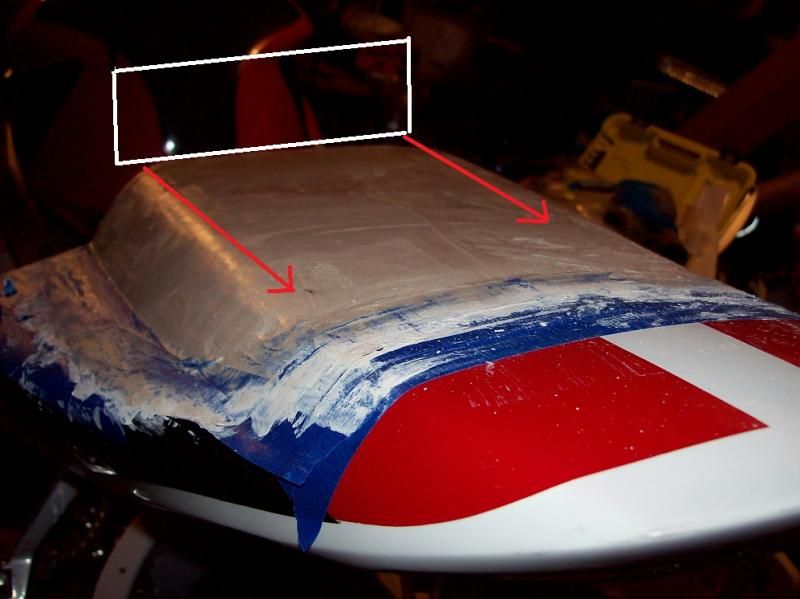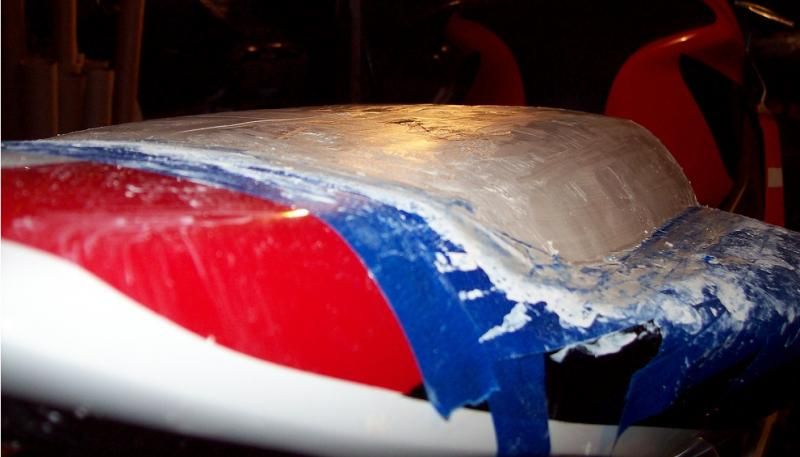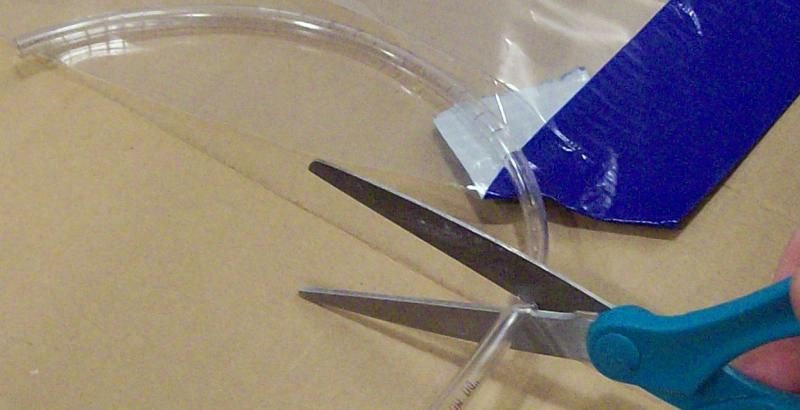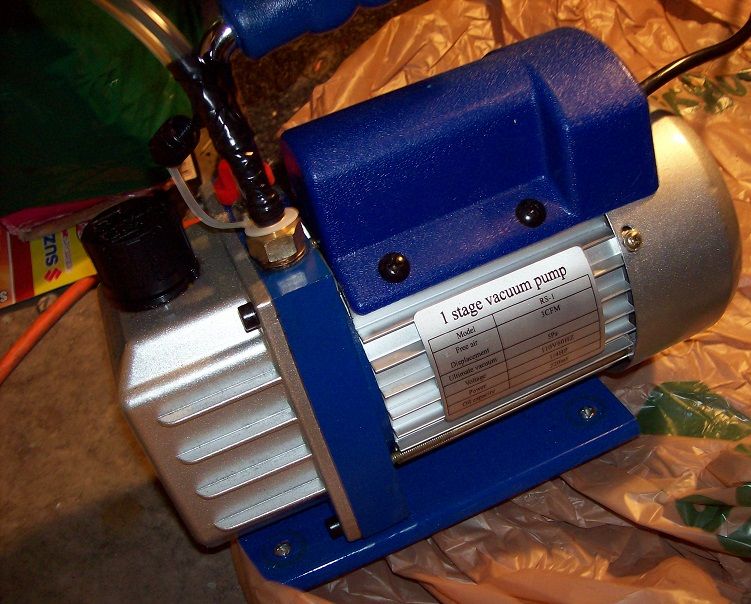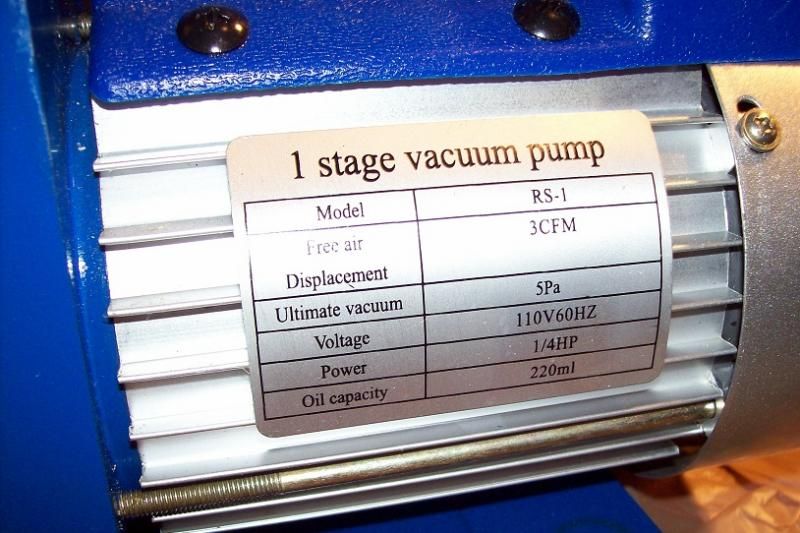Hi, Matt Behning here with another $200 high quality mod.
Anyone can go out and start making carbon fiber parts with all the "kits" out there, spending $400+ getting the expensive: peel ply, vacuum bagging film, bagging tube fitments, one way valves, double sided bagging tape, special breather cloth, mold release, and other components. This is a how to on how to make the exact same high quality CF part with alternative tools for about $200 (start to finish); all the while using the highest quality Carbon Fiber and Resin. I'll show you what works and what doesn't. It's not as easy as the youtube videos and other write ups make it look.
Here I'm going to make a carbon fiber cowl as practice before making a new subframe. This is for my 2000 Honda CBR 929. But you can make anything for your car, boat, house, etc. Using these instructions you can learn to make a DIY carbon fiber hood, instrument panel, brace, a boat, cover, tail gate, bike frame, seat pan, etc.

Highest quality CF-$17 a yard (you'd need only a half a yard tops for a small part 3 layers)
24oz high quality epoxy resin-$25
small electric vacuum pump-$60
digital scale:$7
4 mil poly plastic film sheet for bagging- $10
Duct tape- $6
Painters tape-$5
water based clay-$10
carnauba Wax-$5
Fiber glass cloth for mold-$10
fiber glass poly resen-$15 (or you can use the epoxy resin that is about twice the price ounce for ounce)
80grit and 220grit sand paper-$6
clear vinyl tubing 1/8" and 1/2"-$4
foam brushes-$5
rubber gloves-$5
two 1/4 x 1-1/2" bolts-$2
Things you need that you probably already own:
-plastic cups
-cling wrap
-measuring tape
-scissors
-puddy knives
-a drill
-a wood drill bit (any size around 1/2")
-an old sweat shirt or fleece fabric
-wax paper
-wire brush or wheel
-old spray bottle (use an empty windex or something)
-old piece of 2'x'1'x1/2" piece of wood
-old juice or milk bottle
-piece of card board (cereal box works)
-string
Vacuum bagging is the gold standard in getting the best/strongest end product, as opposed to "free lay up." Which is saturating the carbon fiber cloth the best and most even you can, without adding too much weight in excess resin; avoiding trapped air bubbles; getting the wetted out cloth to conform to the mold with gravity; on and on problems exist when you attempt to save time and effort by not using vacuum bagging.
The I made were made using the professional industry standard of vacuum bagging, (but in my budget method

First thing to understand is there is some basic Carbon Fiber terminology to know before you buy. (my un-official understanding)
1.) Never buy anything except the PAN manufacturing process (pitch process is less quality)
2.) Never buy CF that doesn't come on a roll... usually they come on rolls 50 inches wide and can be purchased by the yard... average price is $20-25 a yard that is 50 inches wide. Folded or remnant fabric left over from other people's projects is just a gamble.
3.) Pre-preg carbon fiber- is great. However it needs to be stored in a freezer because the resin pre-infused CF cloth will cure at room temperature eventually. (can be shipped to you at room temperature fine). ALSO, you need an oven big enough to bake your part in on a mold that can tolerate up to 500 degrees... take away: leave pre-preg CF for the pros that make lots of parts from expensive molds in big ovens.
4.) Weave- that is the orientation the groups of tiny strands of carbon fiber are arranged in when the manufacturer produces the "cloth" sheet of carbon fiber. Not all weaves are created equal (read my HOW TO: Start DIY Carbon Fiber. Layers, weaves, resin, etc thread).
http://www.fireblades.org/forums/ar...ade/110078-how-start-diy-carbon-fiber-layers-weaves-resin-test-results-too.html
For example there is:
Twill: the classic "carbon fiber look"ie: 2x2 twill ... that means two bands of CF are patterned next to each other in the weave
Plain: that is the classic checker board looking weave...

You can get different thread weave designs and thicknesses of Carbon Fiber if you want; but you don't have to.
If you need help deciding what weave, how many layers of CF you may need see my thread on the strength testing I did:
http://www.fireblades.org/forums/ar...ade/110078-how-start-diy-carbon-fiber-layers-weaves-resin-test-results-too.html
5.) Tow- that is talked about in "k" or thousands of units. I test 3k tow (2x2twill weave) CF that means there are 3,000 filament strands of CF in each thread group of CF that is being weaved. I also test in this experiment 12k tow (Plain weave) that means there are 12,000 filament strands of CF.... naturally the higher the tow, the thicker the fabric will be... but as you will find out in the testing... that doesn't mean it'll be stronger. See the picture of the ebay seller I bought from and the two fabrics I purchased from them:

6.) weight or GSM- it goes up with the higher the tow and better weave you buy. My 3k tow 2x2twill weave has a weight of 5.7oz per yard squared If I wanted to pay 30% more I could get an even tighter plain weave from Hexcel with the same 3k tow strands weaved in a product that is 5.8oz per yard squared. these two 3k products can be converted to a weight of about 200 Grams per Sq meter. The 12k product I was using is 300 GSM.
7.) Resin- is the liquid product you mix with the supplied hardener that cures (without the need for air, because it doesn't dry). Usually a 2:1 formula. Google it if you want to know more. The main thing you need to know is that you should buy epoxy resin
as opposed to cheaper polyester resin that is available at the hardware stores. Epoxy has superior strength, UV light protection, and clarity. You get what you pay for with resin so do your research. I used "Max Clear 1618 epoxy resin" I've also used "Max Clear High Performance epoxy resin"... but the 1618 is slightly more fluid and better for vacuum bagging since it soaks into the CF better.
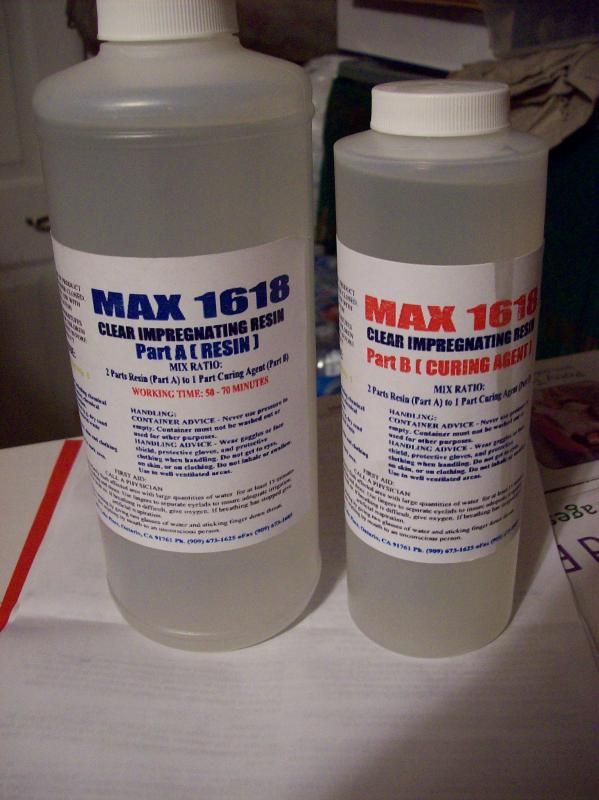
Click on the link and they have TONS of good info on the product link (second from top)
Welcome to Polymer Composites Inc. Product Categories
More terms can be found on the two main manufactures of CF for the commercial DIY:
Hexcel.com - Glossary of Carbon Fiber and Composite Terminology
Toray Carbon Fibers America - Carbon Fibers and Composites Terminology
Anyone can go out and start making carbon fiber parts with all the "kits" out there, spending $400+ getting the expensive: peel ply, vacuum bagging film, bagging tube fitments, one way valves, double sided bagging tape, special breather cloth, mold release, and other components. This is a how to on how to make the exact same high quality CF part with alternative tools for about $200 (start to finish); all the while using the highest quality Carbon Fiber and Resin. I'll show you what works and what doesn't. It's not as easy as the youtube videos and other write ups make it look.
Here I'm going to make a carbon fiber cowl as practice before making a new subframe. This is for my 2000 Honda CBR 929. But you can make anything for your car, boat, house, etc. Using these instructions you can learn to make a DIY carbon fiber hood, instrument panel, brace, a boat, cover, tail gate, bike frame, seat pan, etc.

Highest quality CF-$17 a yard (you'd need only a half a yard tops for a small part 3 layers)
24oz high quality epoxy resin-$25
small electric vacuum pump-$60
digital scale:$7
4 mil poly plastic film sheet for bagging- $10
Duct tape- $6
Painters tape-$5
water based clay-$10
carnauba Wax-$5
Fiber glass cloth for mold-$10
fiber glass poly resen-$15 (or you can use the epoxy resin that is about twice the price ounce for ounce)
80grit and 220grit sand paper-$6
clear vinyl tubing 1/8" and 1/2"-$4
foam brushes-$5
rubber gloves-$5
two 1/4 x 1-1/2" bolts-$2
Things you need that you probably already own:
-plastic cups
-cling wrap
-measuring tape
-scissors
-puddy knives
-a drill
-a wood drill bit (any size around 1/2")
-an old sweat shirt or fleece fabric
-wax paper
-wire brush or wheel
-old spray bottle (use an empty windex or something)
-old piece of 2'x'1'x1/2" piece of wood
-old juice or milk bottle
-piece of card board (cereal box works)
-string
Vacuum bagging is the gold standard in getting the best/strongest end product, as opposed to "free lay up." Which is saturating the carbon fiber cloth the best and most even you can, without adding too much weight in excess resin; avoiding trapped air bubbles; getting the wetted out cloth to conform to the mold with gravity; on and on problems exist when you attempt to save time and effort by not using vacuum bagging.
The I made were made using the professional industry standard of vacuum bagging, (but in my budget method

First thing to understand is there is some basic Carbon Fiber terminology to know before you buy. (my un-official understanding)
1.) Never buy anything except the PAN manufacturing process (pitch process is less quality)
2.) Never buy CF that doesn't come on a roll... usually they come on rolls 50 inches wide and can be purchased by the yard... average price is $20-25 a yard that is 50 inches wide. Folded or remnant fabric left over from other people's projects is just a gamble.
3.) Pre-preg carbon fiber- is great. However it needs to be stored in a freezer because the resin pre-infused CF cloth will cure at room temperature eventually. (can be shipped to you at room temperature fine). ALSO, you need an oven big enough to bake your part in on a mold that can tolerate up to 500 degrees... take away: leave pre-preg CF for the pros that make lots of parts from expensive molds in big ovens.
4.) Weave- that is the orientation the groups of tiny strands of carbon fiber are arranged in when the manufacturer produces the "cloth" sheet of carbon fiber. Not all weaves are created equal (read my HOW TO: Start DIY Carbon Fiber. Layers, weaves, resin, etc thread).
http://www.fireblades.org/forums/ar...ade/110078-how-start-diy-carbon-fiber-layers-weaves-resin-test-results-too.html
For example there is:
Twill: the classic "carbon fiber look"ie: 2x2 twill ... that means two bands of CF are patterned next to each other in the weave
Plain: that is the classic checker board looking weave...

You can get different thread weave designs and thicknesses of Carbon Fiber if you want; but you don't have to.
If you need help deciding what weave, how many layers of CF you may need see my thread on the strength testing I did:
http://www.fireblades.org/forums/ar...ade/110078-how-start-diy-carbon-fiber-layers-weaves-resin-test-results-too.html
5.) Tow- that is talked about in "k" or thousands of units. I test 3k tow (2x2twill weave) CF that means there are 3,000 filament strands of CF in each thread group of CF that is being weaved. I also test in this experiment 12k tow (Plain weave) that means there are 12,000 filament strands of CF.... naturally the higher the tow, the thicker the fabric will be... but as you will find out in the testing... that doesn't mean it'll be stronger. See the picture of the ebay seller I bought from and the two fabrics I purchased from them:

6.) weight or GSM- it goes up with the higher the tow and better weave you buy. My 3k tow 2x2twill weave has a weight of 5.7oz per yard squared If I wanted to pay 30% more I could get an even tighter plain weave from Hexcel with the same 3k tow strands weaved in a product that is 5.8oz per yard squared. these two 3k products can be converted to a weight of about 200 Grams per Sq meter. The 12k product I was using is 300 GSM.
7.) Resin- is the liquid product you mix with the supplied hardener that cures (without the need for air, because it doesn't dry). Usually a 2:1 formula. Google it if you want to know more. The main thing you need to know is that you should buy epoxy resin
as opposed to cheaper polyester resin that is available at the hardware stores. Epoxy has superior strength, UV light protection, and clarity. You get what you pay for with resin so do your research. I used "Max Clear 1618 epoxy resin" I've also used "Max Clear High Performance epoxy resin"... but the 1618 is slightly more fluid and better for vacuum bagging since it soaks into the CF better.

Click on the link and they have TONS of good info on the product link (second from top)
Welcome to Polymer Composites Inc. Product Categories
More terms can be found on the two main manufactures of CF for the commercial DIY:
Hexcel.com - Glossary of Carbon Fiber and Composite Terminology
Toray Carbon Fibers America - Carbon Fibers and Composites Terminology















































































